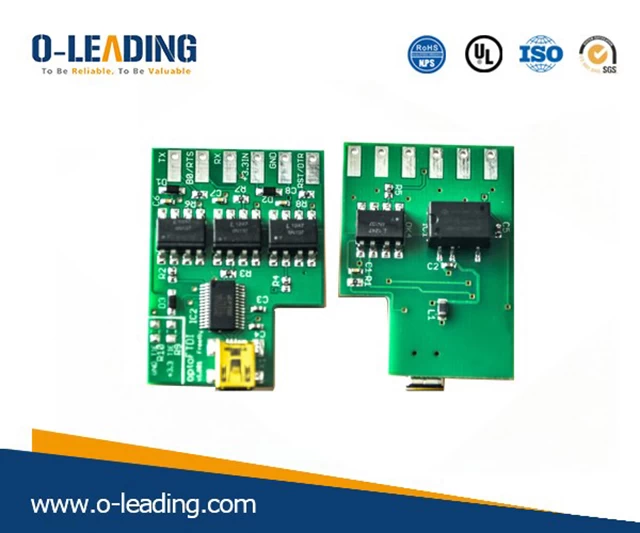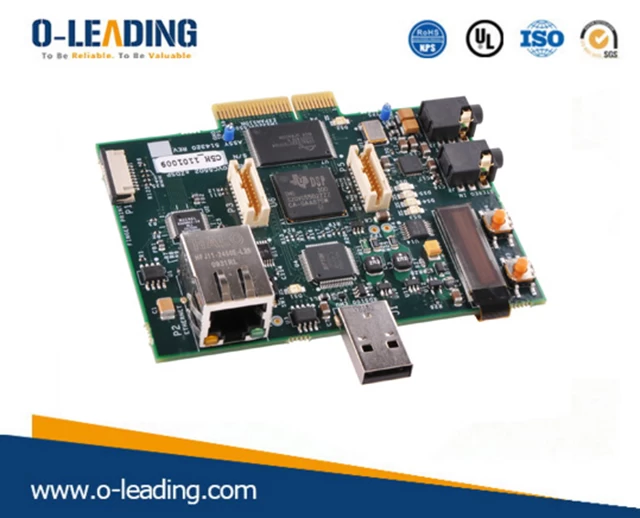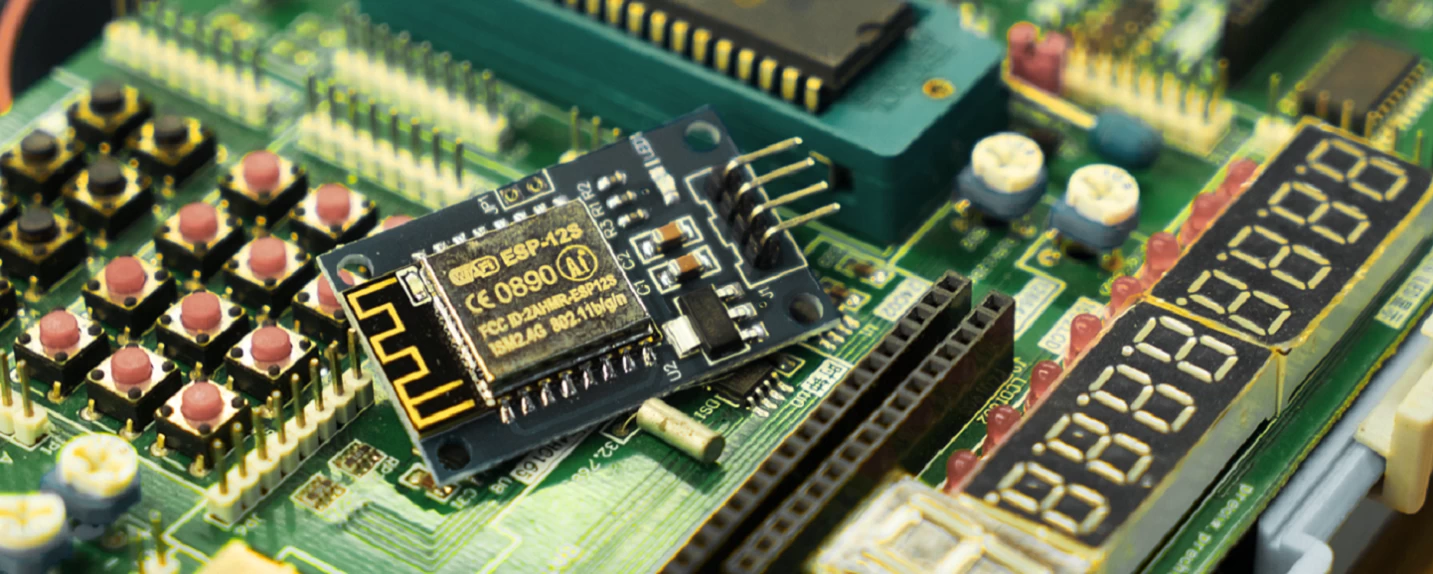PCB is the "lifeline" of electronic products, with high growing speed

Immersion Gold manufacturer china
Printed circuit board, Printed Circuit Board, referred to as "PCB". If each electronic product is regarded as a living system, the "current" is the blood flow of all electronic living bodies, the electronic products must have current to "survive", and the "PCB" is the "lifeline" that carries this "blood flow". .
From the perspective of physical structure, PCB is mainly composed of two kinds of materials: insulating substrate and conductor. It is the supplier of electronic components. It plays a role in supporting and interconnecting electronic devices. It is a combination of electronics, machinery, chemical materials, etc. The components necessary for most electronic equipment products, also known as the "mother of electronic products", have been developed for more than 100 years.
Since 1980, the global electronic terminal demand experienced a relatively significant four waves, driving the PCB 4 times faster growth cycle, and by 2017 the global PCB output value exceeded 58.8 billion US dollars.
From 1980 to 1990, the popularity of home appliances in the global market led to the development of the electronics industry, PCB also ushered in a faster growth rate (CAGR = 12.7%), in 1991-1992 due to the slowdown in the growth of traditional home appliances, and the world's major The economic recession in Japan, the output value of the PCB industry has also shown a cumulative decline of about 16%;
From 1993 to 2000, driven by the popularity of desktop computers and the Internet wave, the PCB industry once again ushered in rapid growth (CAGR = 12.9%). From 2001 to 2002, due to the global Internet bubble bursting economic recession, the PCB industry also faced In the recession, the cumulative recession in 2 years is 25%.
In 2003-2008, with the popularization of mobile phone function machines and notebooks, the demand for communication and consumer electronics to PCBs was again stimulated (CAGR=7.9%). Due to the financial crisis in 2008, the PCB industry declined by 15% in 2009.
In 2010-2014, with the popularization of smart phones and the development of 3G and 4G, the growth rate of the PCB industry (CAGR=6.9%) was promoted. In 2015-2016, with the saturation of consumer electronics penetration and the demand for 3G and 4G communication equipment, Slow, the PCB industry has a small cumulative decline of 6%.
By 2022, 5G, cloud servers, automotive electronics, etc. will continue to drive PCBs to maintain a 3.1% compound growth rate.
By 2022, according to Prismark data, the global PCB will maintain a compound growth rate of 3.1%, and the industry output value will reach 68.81 billion US dollars. Future downstream demand presents several major features: 15G excitation communication base station and other equipment construction cycle. 2 cloud computing construction, continue to pull server demand. 3 artificial intelligence and virtual currency pull demand for HPC high-performance computers. 4 The process of automotive electronics continues. 5 Industrial automation and medical device electronic demand growth. 6 Internet of Things stimulates the demand for various small electronic sensor products.

Corresponding to the continuous development of global electronic products, the type of PCB product structure continues to change.
The application value trend of various products, the proportion of multi-layer boards remained high, and the growth rate of flexible boards and HDI boards accelerated.
According to Prismark data, the global multi-layer PCB production value in 2017 is 22.4 billion US dollars, accounting for 38% of the global PCB output value, and the compound growth rate can reach 3.00% by 2022. With the demand of automotive electronics and communication servers, multi-layer boards Continue to grow steadily, and the proportion is expected to increase further.
The output value of flexible board is 12.5 billion in 2017, accounting for 22% of the global PCB output value. The global HDI output value is 9 billion US dollars, accounting for 15% of the global PCB production value. By 2022, the combined growth rate is 3.51 and 4.01% respectively. Flexible boards and HDI boards are mainly used in the demand for miniaturized electronic devices such as mobile phones and wearable devices. As the trend toward miniaturization of electronic devices continues, the demand for flexible boards and HDI boards has steadily increased.
From the life cycle of various products, single/double and multi-layer rigid boards are in a mature application stage. HDI, high-level boards, IC package boards, etc. are in the growth stage, accompanied by electronic products to 5G, wearable, etc. With the development of application direction, the future of PCB will also develop towards thicker, finer and more deformable trends.
PCB industry global and China competition pattern, overseas PCB manufacturers are in a leading position, mainland PCB manufacturers have a larger replacement space
The global electronics industry center has moved eastward, driving the global PCB industry transfer, and China's regional output value has been the largest in the world. Before 2000, 70% of global PCB production value was distributed in Europe, America (mainly North America) and Japan. With the manufacturing industry led by the electronics industry shifting to the Asia-Pacific region, the global PCB manufacturing center has grown rapidly in the Asia-Pacific region. After 2000, China's PCB output growth rate has been remarkable, and the proportion of output value has increased from 8% in 2000 to 50% in 2017. . The output value increased from 3.4 billion US dollars in 2008 to 29.7 billion US dollars in 2017. In 2017, China's PCB output value grew by about 10% year-on-year. It surpassed the overall growth rate of global PCB production value, and the status of China's PCB industry continued to strengthen.

PCB Assembly manufacturer china
The capacity building of foreign regional foreign-invested manufacturers is relatively small, and only some enterprises continue to maintain a certain production line upgrade, while Chinese enterprises have significantly faster capacity building than the rest of the world. The top 14 companies in China's listed PCB companies will have a compound growth rate of 17% in the next three years, contributing approximately 6 to 7% of China's overall PCB capacity expansion, while Chinese-funded PCB companies are relatively more active and have greater goals.

































